


 الفيزياء الكلاسيكية
الفيزياء الكلاسيكية
 الكهربائية والمغناطيسية
الكهربائية والمغناطيسية
 علم البصريات
علم البصريات
 الفيزياء الحديثة
الفيزياء الحديثة
 النظرية النسبية
النظرية النسبية
 الفيزياء النووية
الفيزياء النووية
 فيزياء الحالة الصلبة
فيزياء الحالة الصلبة
 الليزر
الليزر
 علم الفلك
علم الفلك
 المجموعة الشمسية
المجموعة الشمسية
 الطاقة البديلة
الطاقة البديلة
 الفيزياء والعلوم الأخرى
الفيزياء والعلوم الأخرى
 مواضيع عامة في الفيزياء
مواضيع عامة في الفيزياء|
Read More
Date: 7-8-2016
Date: 28-7-2016
Date: 11-8-2016
|
Orbiting Charges and Multipole Radiation
Charges +q and -q a distance d apart orbit around each other in the x-y plane (z = 0) at frequency ω(d << c/ω) (see Figure 1.1).
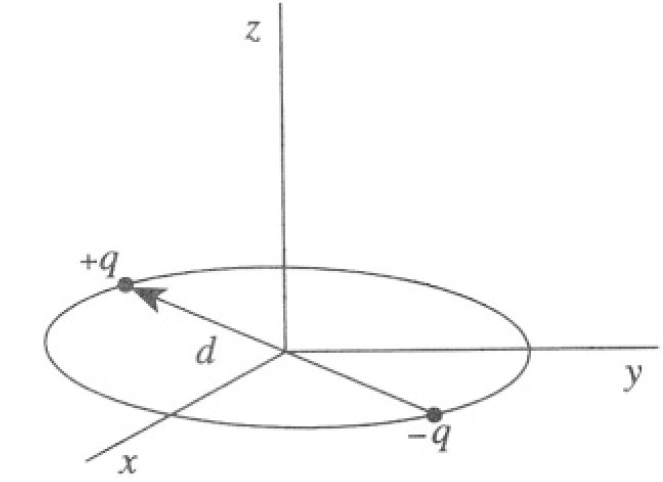
Figure 1.1
a) The emitted radiation is primarily confined to one multipole. Which one?
b) What is the angular distribution of the radiated power?
c) What is the total power radiated?
d) The plane z = -b is now filled with a perfect conductor (b << c/ω) What multipole radiates now?
SOLUTION
a, b) At r >> d the emitted radiation is confined to a dipole where is the wavelength. The vector potential of the system with dipole (r >> λ >> d), moment p at a distance r >> λ is given by
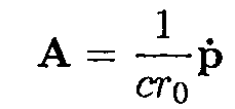
The magnetic field of the system
 (1)
(1)
where p = qd is the dipole moment of the system, n is the unit vector in the direction of observation, and r0 is the distance from the origin (see
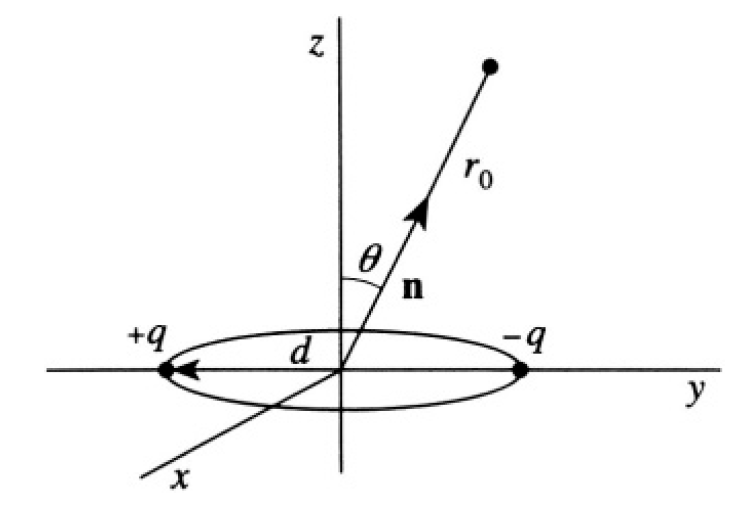
Figure 1.2a
Figure 1.2a). The energy flux is given by the Poynting vector S:
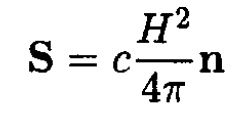 (2)
(2)
The radiated power in a solid angle dΘ is given by
 (3)
(3)
Substituting (1) into (3), we obtain
 (4)
(4)
Noting that

we have
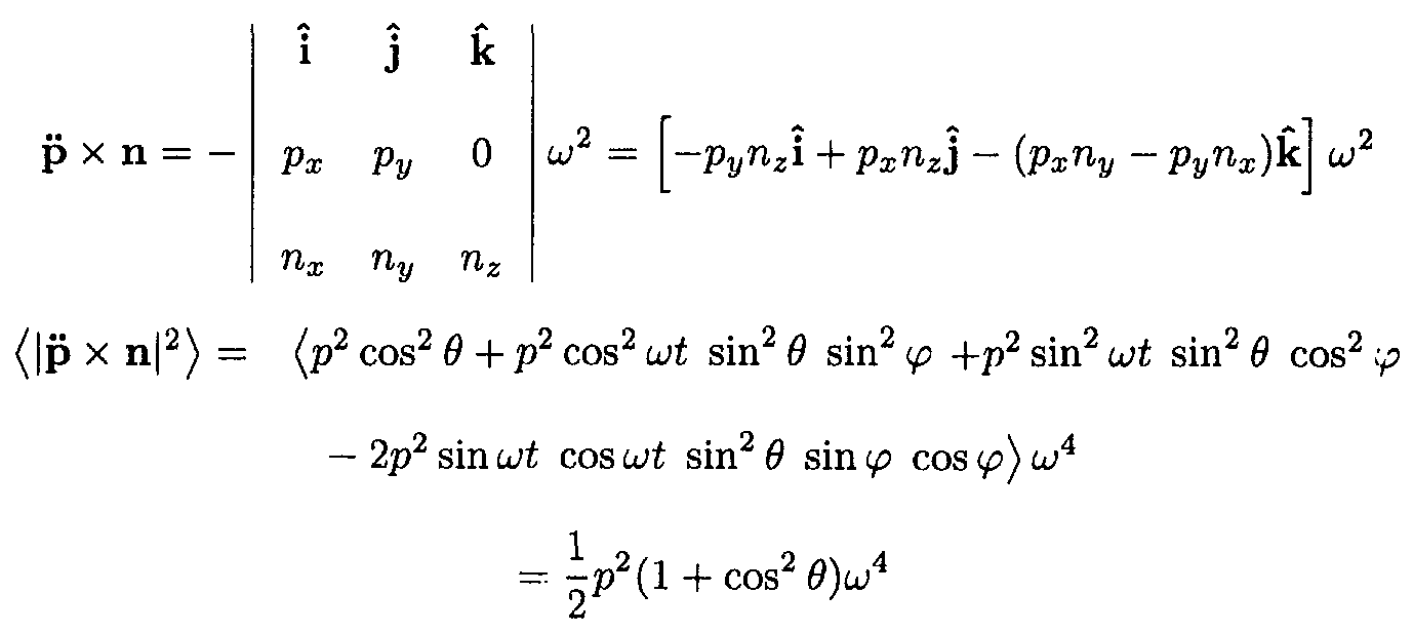
where we took the average over the period of revolution and used [sin2 ωt] = [cos2 ωt] = 1/2 and [2sin ωt cos ωt] = [sin 2ωt] = 0. So form (4)

c) The total power radiated is

d) When the plane z = -b is filled with a perfect conductor, we have an image charge for each of the charges +q and –q, and the total dipole moment of the system becomes zero (see Figure 1.2b). The next nonzero multipole in this system must be quadrupole with quadrupole moment Dαβ:


Figure 1.2b



|
|
|
|
علامات بسيطة في جسدك قد تنذر بمرض "قاتل"
|
|
|
|
|
|
|
أول صور ثلاثية الأبعاد للغدة الزعترية البشرية
|
|
|
|
|
|
|
جامعة كربلاء: مشاريع العتبة العباسية الزراعية أصبحت مشاريع يحتذى بها
|
|
|